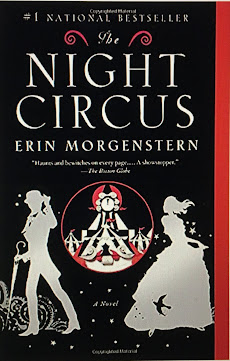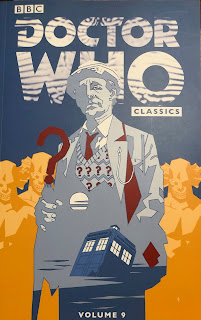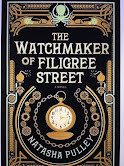The Best Words in Plant-Based Cooking by Theresa Gauthier
Author Spotlight: Linda McCartney
Linda McCartney has a number of claims to fame. One is this series of cookbooks she wrote, but there are other books she’s written as well. Say what you like about her, and I’ve heard plenty from misinformed misanthropes who can’t stand her because of course Paul McCartney might have married them if Linda hadn’t gotten there first, Linda was always a talented woman. Her photography books are worth buying, but this review is focused on her cookbooks.
Vegetarian, Plant-Based, whatever you choose to call it, this more conscious approach to eating meals without meat is becoming more popular all the time. There’s no shortage of such books, but my favorites, the ones I return to again and again, are all by the same author—Linda McCartney.
Linda McCartney Cookbooks
- Linda McCartney’s Home Cooking: Quick, Easy, and Economical Vegetarian Dishes for Today, 1992
- Linda’s Kitchen: Simple and Inspiring Recipes for Meals Without Meat, 1995
- Linda McCartney On Tour: Over 200 Meat-Free Dishes From Around the World, 1998
- Linda McCartney’s Family Kitchen: Over 90 Plant-Based Recipes to Save the Planet and Nourish the Soul, 2021
Linda is perhaps more famous for who she married than for anything else she did, which is a shame, because she’s as talented—in different ways—than her famous husband.
Yes, I often refer to her as Linda as though I knew her. It’s a habit I’m not inclined to break.
The recipes in this book were curated by Linda’s family. Paul McCartney wrote the introduction and daughters Mary and Stella joined Paul in putting the book together. These are family recipes. This is how they’ve always eaten, and they’re relishing the movement towards plant-based eating, as Linda surely would were she with us today.
The book is a gem—my favorite section is Breakfast and Brunch—and I can’t wait to try her pancake recipe! The weekend brunch recipe, baked beans, and hash browns look incredible too. In truth, it’s the sweet potato roast with avocado, cilantro, and dill that really caught my eye. Sweet potato is a personal favorite and the combination of spices and seasonings along with avocado and cilantro is hard to ignore. The tofu scramble is simple and delicious, and a great start if you’ve never made tofu.
Of her salads, I love the Moroccan Carrot salad with it’s walnuts, red pepper, and scallions, it hits all the right notes.
There’s also a recipe for caponata—a recipe my family has made for generations, but I’m pleased to find Linda’s take on it. It’s hard to beat eggplant with tomato, olives, and capers.
I’m dying to try her Sticky Toffee Pudding, and if it’s as good as her other desserts—Eton Mess, Gingerbread, Key Lime Pie, and Coconut Rice Pudding—I’m sure to enjoy it.
This book is a winner and a welcome addition to any kitchen.
When Linda McCartney’s first cookbook, Linda’s Home Cooking, was released, there was far less “alternative” product available than there is now. Her recipes introduced me to things like “textured vegetable protein” or TVP, and tofu, among other things. The recipes in this first book are not vegan, but are a good introduction to the meatless way of life. Incorporating cheese, eggs, and honey—products vegans won’t touch—these meals were an easy way for someone who’d never considered being vegetarian to ease into it.
Linda’s books read like a letter to a friend or close family member. I’ve always loved cookbooks that include little notes about the recipes from the author or that take a few pages to an entire chapter at the beginning to explain the concept of the book and reveal a few things about the recipes, the ingredients, or the lifestyle. Linda’s books do all of this.
I still use her first cookbook as a reference for what vegetables and fruits are abundant in what vitamins and minerals. This book is so much more than a cookbook. Instead it’s a true introduction to the vegetarian lifestyle. Taken at face value, it’s a written answer to the questions people have when they consider becoming vegetarian but continue to talk themselves out of it. Linda McCartney addresses these questions, but like a friend might—offering information, giving the benefit of her experience, and explaining how to incorporate these choices into your life, how you can still get protein into your diet even without meat, and how the family can come together and cook their meals together it they’d like to do that.
There’s a section on Thinking About Food, which includes a breakdown of what you do and don’t need in your diet, another section called The New Age of Food, which gives cooking tips and where to find the special meat-free (what people now call plant-based) products. Then follows a cooking terms defined so everyone understands her directions in the recipes that follow. In Essential Utensils, Linda explains not only what pots and pans are necessary, but also what food prep equipment you’ll need to cook like a pro.
The Choosing and Using Vegetables; Nutritious Nuts and Seeds; Fruit; Glorious Grains and Legumes; Helpful Herbs and Spectacular Spices sections are my favorites. Here she names and describes all the ingredients you might need, where to find them, how to store them, best ways to prepare them, and what vitamins, minerals, and nutrients they contain. This is all vital information. Whatever else plant-based eating is, it incorporates far more awareness of what you eat and its affect on your health than the often mindless overconsumption that’s become the norm.
The recipes are the true treasure in this book.
The soups in particular have become family favorites, with the French Carrot Soup earning a regular spot at our holiday table. The bright orange color, the rich flavor and creamy texture make it a star of any menu.
Her mushroom recipes including Mushroom Loaf, Mushroom Pie, and Mushrooms and Rice are also standouts.
The desserts are sublime. Cakes, pies, cookies—all mouth-watering, and easy to make—each better than the last. My favorite here are the Gingerbread Cake—with spices and molasses making it a fun addition to a holiday menu.
The recipes themselves are easy to understand and to follow. Nothing tricky or complicated, using this book makes it easy to put a meal on the table.
Linda McCartney’s second cookbook, Linda’s Kitchen, contains less explanation as to how to be vegetarian, but it makes up for that with menu and party planning. The recipes themselves are just as good if not better than in the first book.
The menus are a great starting point, and I particularly like her Thanksgiving menu. I wouldn’t change a single item on that one. Her desserts here are a mix of traditional British dishes and American ones. Peach Cobbler, Bakewell tart—all delicious and worth the effort.
Try the enchiladas. They've become a staple, and I often turn to these pages when I want to be a bit adventurous.
All of the books show off the food with gorgeous photography. Colorful, brilliant photos pop off the page showing the food to best advantage and making it impossible not to want to try them all.
These books are inspiring and fun, and full of information—but the most important thing to know is these recipes are delicious!










Comments
Post a Comment